Dinner Ready is Pizza
We’ve arrived at the final stretch for Spring semester. Of course, CSM is never one to give a moment’s rest amongst the various reports, projects and final papers, so many courses are offered their last major exams before Finals. CSMAC feels your pain, so get ready for an evening of pizza, soda, and mediocre anime. Unless, of course, you weren’t there, in which case you get to be treated to only reviews of mediocre anime, and that’s just as good. On to the review!
Towa no Quon
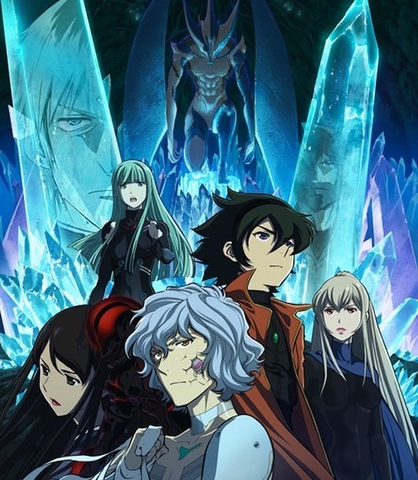
AKA X-Men: The Anime
In the future, Tokyo has humans who have awakened distinct powers. However, in order to protect the “order” of the modern world, these humans are being hunted by a secret organization named Kestos. Denominated as Attracters, these exceptional individuals are joining forces to defend themselves. They are led by an idealist named Quon who is determined to save all Attracters he can.
Oh, BONES. What has happened to you? You used to be such a great studio, but it seems like all of your recent works have cratered. Towa no Quon was hyped as being a really good OVA series with a new take on the classic Marvel series X-Men. It’s a shame, then, that the series falls flat on its highly budgeted face.
The most interesting (and I use the term lightly) character is the Attractors’ leader, Quon. While not immortal, he is blessed with long life, rapid healing, and advanced fighting abilities – basically just what anyone would expect an anime X-Men would have. However, he is more often than not a pacifist ideologue who is obsessed with minimizing human loss and saving every last Attractor he can find. While that’s nice and all, he’s failed 26 times already, and considering that he keeps losing an Attractor at least once per OVA, he’s on a bit of a losing streak. Furthermore, there’s no realistic or wise counterbalance to Quon. He’s the nigh all-powerful leader, and everyone else pretty much goes along with his “plan” to save everyone and train them in his giant enclosed botanical garden/amusement park, the Fantasium Garden. Speaking of which, very little is ever known about the other characters in Quon’s cabal, most of them known only for their abilities, which are themselves forgettable. As such, character development is little to non-existent. And how about Kestos? Anything fun happening over there? Nope, just some depressing cyborgs passing the time while an ultra-conformist ass berates them to catch/kill more Attractors. The depressing part is that Kestos really isn’t effective at all against Quon’s campy forces. The fact that most of the Attractors (young children to teenagers, mind you) get killed is because of Quon’s naïve idealism or the fact that Attractor children still act like children (which is to say rude, insensitive, and cruel). The OVA’s remain mostly episodic, contributing little to an overall storyline until the last third of the series, and even then, the main villain is just a contrived threat. Even the action scenes are short and abrupt, with much of the tension artificially created by camera angles and music. There’s just so little redeemable value in this series, and at 40-50 minutes per OVA, there are easily better uses of one’s Shonen-viewing time.
The animation is where Towa no Quon really shines. The character designs are sleek and interesting. The colors contrast where referring to the Attactors and the cyborgs. The Fantasium Garden and the Attractors are characterized by bright and warm colors, while the workers of Kestos wear only black (the color of their armored bodies) and their hair and skin possess pale tones. This is part of a larger nature vs machine overtone, but it is never properly presented to make the audience discuss or care about it. The backgrounds are above average, with designs remaining consistent and proportional. The fight scenes, albeit brief, have an interesting aspect in that some Attractors have to transform in order to use their powers. Of course, since Quon is the hero/martyr/leader, he gets the most action scenes, transforming into a one-eyed Casshern-like being who Kestos lovingly calls Insania. As such, it becomes pretty obvious that Kestos doesn’t treat Attractors as being in any way human (although they are, in fact, completely human).
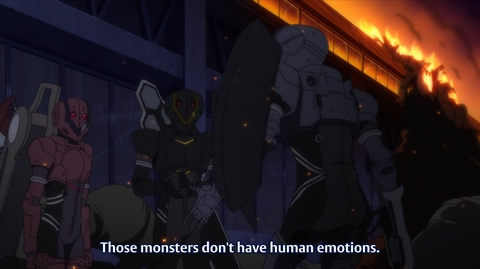
Trololol, not like us Cyborgs!
The music is a bit more interesting than the standard Shonen fare, foregoing generic rock and guitar for generic orchestral scores. That said, it at least fulfills its purpose for helping to emotionally drive the scenes forward. It’s a shame, though, that the music is usually the ONLY force driving an emotional response. A decent score can only do so much when the story is so lacking.
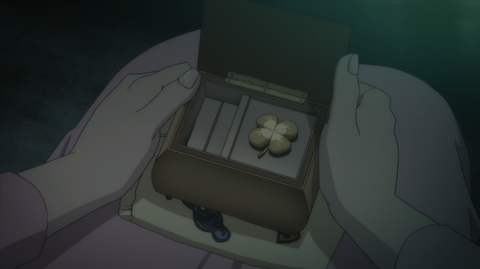
You know the series is bad when a generic music box is the focal point of Episode 1.
One of these days, BONES may get its act together and produce more of the quality works that inspired our childhood. Until then, just stay away. The studio has produced failure after failure for at least two years straight, and it doesn’t feel like it will be returning to prominence any time soon. If you want to watch a super-hero anime, I would sooner recommend the actual X-Men anime then Towa no Quon. Director Umanosuke Iida must be spinning in his grave.
The Princess and the Pilot
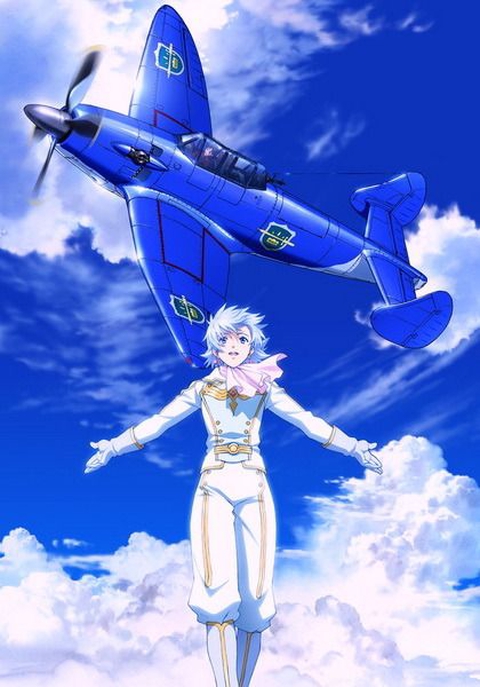
On the Wings of Love.
The story begins with a young street rat running in the rain while being chased by some other kids for what little change he had. After being mugged, he stretches his hands to the parting clouds, saying that he dreams of being free to soar through the clouds, just as a fleet of planes crosses the sky.
The scene then changes to several years later with the Princess Fana of Lemmva being introduced to her fiancée, Prince Carlo, at a lavish party. Being he is beaming with excitement, she is decidedly not as thrilled, but she is obligated to, so she accepts. Delighted by her replied, he vows to defeat the opposing aerial fleet of Amatsuvia, and return for her hand in marriage in one year. As everyone continues to dote and congratulate her, Fana remains melancholic. However, that night a few enemy ships attack her and her father’s (the Emperor) houses, killing him but sparing her. Due to the latest assassination attempt, it has become urgent that Fana be reunited with Carlo as soon as possible.
At this time, the boy from before, Charles, is now a pilot in the special air corp. However, his parents were from warring countries, so he is regularly picked on as a “bestado” (as noted by his black hair, as opposed to everyone else with blond or brown hair). However, since he’s the best pilot available, headquarters tasks him with delivering the silver-haired princess to across the Amatsuvian-controlled sea to Carlo. Upon meeting the princess, Charles recalls seeing her many years ago. Charles and Fana take flight, and one visual montage later they land on the water. While rifling through her many heavy bags of clothing, her bags slip of the wing and she slides in to the water with them. Although she lives on an island, she cannot swim and her multiple bulletproof vests don’t help. So Charles dives in and saves her. When they emerge from the water, Charles catches sight of some enemy flying fortresses, so they quickly hide the plane amongst a convenient rocky outcropping. Later that night, Fana passes the time humming a tune from her childhood.
The next day, they notice the same group of airships passing in the opposite direction. Charles realizes that they are searching for something, but assures the princess that his mission is top-secret.
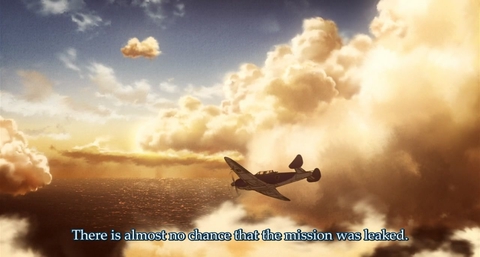
Therefore, the actual probability of safety is 30%.
Later that night, Charles and Fana talk, and Fana feels as though she’s met him before. Then Charles slips into a flashback of when he used to work at her manor as a child. With that, they both fall asleep.
The next day, the cloud cover makes it difficult to spot other aircraft, so shockingly, out of the clouds drop 6 giant Amatsuvian airships to surround Charles and Fana. Intent on destroying the lone plane, the warship launches a bunch of heat-seeking missiles (if you’re wondering how heat-seeking missiles work against the backdrop of an oppositely facing warship, then forget about it). After evading some missile and getting the rest to destroy yet another warship, Charles gets shot in the shoulder by the enemy’s infamous Shinmen fighter planes. Afraid of passing out from blood loss, he has Fana talk to him while they are evading more enemy fire. He tells Fana that he feels so strongly about completing this mission not because he will be paid handsomely as a mercenary, but because this time his job is to save someone. Just when they are about to be shot down, he uses the nitro and speeds just out of range. Although the fighter planes wish to pursue, they are ordered to turn around, for fear of flying out of communications range.
When Charles and Fana finally make it to the Great Falls, the border of enemy territory, Charles is just barely conscious, so after making it past the falls, they make an emergency landing on one of the many tropical islands in the area. Fana drags him from the plane and onto shore, and uses their supplies to tend to his wounds. When he wakes up a couple days later, it’s apparent that Fana has begun to act differently towards Charles.
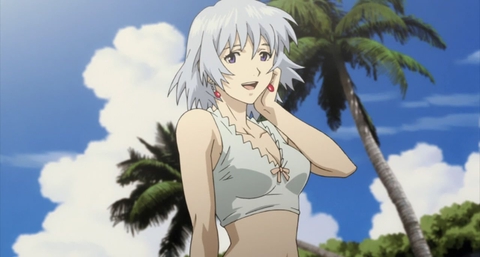
And when did she become an Island Girl?
After a short plane-repair montage, they uncover an endless field of flowers and have a grand old time. That night, Charles and Fana reminisce about their childhoods, and it becomes clear that Fana and Charles were childhood friends (though in the princess and servant sense). His mother, one of her nannies and made it a regular (though secretive) practice of singing the lullaby that Fana is often caught humming. However, since his mother was Amatsuvian, this was extremely taboo, so she was promptly fired. Since they have so much history, Fana says that she’s fallen for Charles, but Charles (who is bound by the outside forces of society – and his imminent death if Carlo ever found out) is forced to reject her feelings. The next day, they come to a tentative agreement to arrive at the drop-off point safely. Although nearly at their goal, a lone Shinmen, piloted by the same man who had previously shot Charles down, arrives to challenge Charles to a one-on-one duel. Although the enemy pilot puts up a good fight, he conveniently forgets that Fana is sitting behind a gattling gun, which subsequently shoots off a good chunk of his wing. He respectfully withdraws, and they arrive at last to the safe zone. Fana wants to bring Charles to the capital, where they can remain “friends,” but he must again reject her feelings for the good of the people.
An imperial airship arrives, and one of the commanding officers promptly pistol whips Charles out of Fana’s embrace. After spitefully paying for Charles’ services, he steals some of Charles’ gold, and the escorts take an indignant Fana back to the airship.
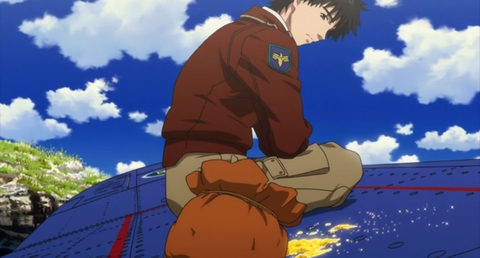
Pretty trollish to grind the gold into a fine powder first.
Despite Fana’s protests, the officer refuses to allow her to say farewell to the bestado mercenary on the grounds that it would be beneath an empress. Thoroughly unamused by the officer’s trolling, the future empress orders her to stand down in her most authoritarian voice, thus knocking him over. This conveniently reveals the gold dust streaming out of his pockets, and so he has no choice but to let her go outside. Suddenly, Charles flies by the airships, releasing a bunch of gold dust into the air, to great romantic effect. The film closes with an epilogue noting that although Empress Fana lived a long life devoted to her people, the deaths of both her and Charles remain shrouded in mystery.
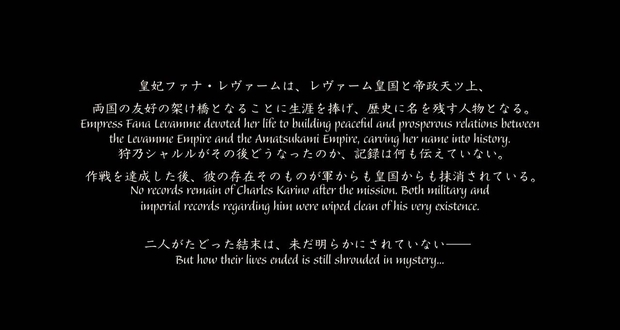
You’d think the death of an empress would attract more attention.
Ah, yes. Another film by Studio Madhouse (It’s a MADHOUSE! A MAAAADHOUSE!!!) Considering the last film of theirs shown in Anime Club was REDLINE, anything that hasn’t taken a solid decade to animate feels like a bit of a letdown. Fortunately, the studio tries to soften that letdown with The Princess and the Pilot.
At its heart, The Princess and the Pilot is about an Air Force mercenary transporting a princess across enemy to her fiancée an ocean away. With the most basic of plots established, the movie then tries to build the world around it. It’s basically a fantasy world heavily influenced by Last Exile, which means flying machines everywhere, but no other scientific or societal advancement. The story takes place during wartime, and this particular country’s caste system is determined how light one’s hair color is. Since protagonist Charles has black hair, he is automatically in the lowest caste, and must therefore have inherent social problems. Still, he feels a sense of duty to the country that has given him so little, so he agrees to escort Princess Fana to her fiancée. From there, the only cast of consequence is Charles and Fana, and they over to get over each other’s insecurities in order to cross the ocean in one peace.
While the film tries to explore their interactions, it resorts to exploiting history rather than chemistry. This is done using a variety of flashbacks and each other recalling memorable times in their childhood. In the meantime, Charles, while emotionally reserved for most of the film, does show determination and a desire to do good, since this mission about actually saving lives as opposed to ending them. Fana is mostly inept until Charles is wounded in an aerial dog fight, at which point she becomes a tomboyish island girl. It’s an interesting personality shift that only really occurs after they both realize that they were childhood friends. However, this second, far less aloof side doesn’t seem realistic when taking into account that she’s a princess. There’s really no time or opportunity for her to have learned survival skills and absolute independence in the hallowed halls of mansions and palaces. Furthermore, it’s awfully convenient that they would both forget about one another, especially since Charles’ mother cursed Fana’s family to her dying breath. Even then, the only explicit history shared between the two is their superficial friendship. However, one part stands out. Fana did mention to him as a child servant that the sky embodied freedom to her. This likely became a driving phrase for Charles as he looked up at the sky while being beaten as a penny-less street urchin.
As for the present, Charles and Fana stay on pleasant enough terms, but Fana doesn’t feel like walking the path set before her. Instead, she wants to be with Charles, despite only being with him for a couple days, and having nothing in common but a brief time together nearly two decades ago. Yet Charles doesn’t point this out. There’s a far more obvious way out: the caste system. “Oh, no one would accept us, a princess and a bestado. And what of your fiancée? Surely he would mercilessly hunt me down and kill me for stealing his bride to be.” While that makes their relationship a bit rocky until the contrived final “showdown,” Fana once again offers to maintain at least some relationship with Charles, and yet again, Charles takes the “society wouldn’t allow it” route. The movie ends on a classy note depicting Charles as being his own man living outside of the caste system. However, there’s just far too little addressed to make the movie memorable.
The movie had its choice of focusing on war, society, racism, or romance, and while it focused on relationships, everything else wanted a piece of the film. When the story does point out certain parts, like the war or the caste system, or the technology involved (Salt water-powered planes? Oh, don’t get me started), very little of it makes sense, and then the matter is never seen again. How about the six gigantic warships which descend from the clouds to surround the protagonists? Half of the ships are destroyed because “hurr durr durr, heat-seeking missiles, how do they work.” How about the squadron of planes hot on their tail? Everyone is recalled because the flying fortresses are too slow to maintain extended radio contact, and that is apparently a far higher priority than dealing a mortal blow to the enemy regime. What about the final confrontation between Charles and Fana and the lone Shinmen pilot that shot Charles down years ago? It’s a 3-minute “battle,” and the guy withdraws after foolishly forgetting in the previous dog fight that Fana is stationed directly above a gatling gun. All the little things that don’t make since slowly start to build up over the course of the movie, becoming ever more distracting. Sure, it’s mostly just Charles and Fana talking on screen, but there’s at least a good 20% of the film that is just unnecessary, and that is precious time, animation, and storyline that could have been better spent focusing on whatever relationship the two either had or could have developed throughout the story. The overarching idea of the movie has a good thing going, but it can’t help becoming mired in the details, trying to build a world and a societal structure that it doesn’t understand nor cares to explain.
Thankfully, the animation and music save the movie. I am convinced that any other studio (except perhaps UFO Table) would have ruined the core of the film. The backgrounds, though inspired by Last Exile, feel more like post-WWI, with buildings still retaining a distinguished Old World European charm. The details on and in the buildings, including the wallpaper and furniture, are detailed and consistent. It strikes a careful balance of not being distractingly under-drawn, nor so overtly detailed as to overwhelm the senses. The character designs are, of course, wonderfully drawn, especially Fana’s after her “island girl” transformation. Since most of the film takes place over water, the water physics are gorgeous in their detail. Any computer generated graphics (used almost exclusively to animate the planes), blends in well with the standard animation. Lighting and textures play a significant role here, adjusting the shading of the sky to the mood of each scene. Together, it makes the film visually pleasing and lets the viewer focus more on the story. The music is an orchestral score that, while not completely memorable, greatly enhances every scene. It can make the scene tranquil, inspiring, exciting, or dramatic, and it never misses a note. The music isn’t invasive at all, merely enhancing the story and evoking emotional responses from the viewer. It’s the level of quality that viewers come to expect from a top tier studio such as MADHOUSE, and it never disappoints.
The Princess and the Pilot is by no means a bad movie. It’s actually rather good. The animation and music is top shelf. However, the story could use some improvements, if only to redirect its efforts from some of the clutter to better conveying the past and present relationship between Charles and Fana. And with a main cast of only two characters, that really shouldn’t be so difficult to do. That said, it still manages the job of engaging the viewer with interesting characters using the most basic of premises. If you have a little over two hours to kill, the Princess and the Pilot should soar to the top of your list.
Toonami April Fools
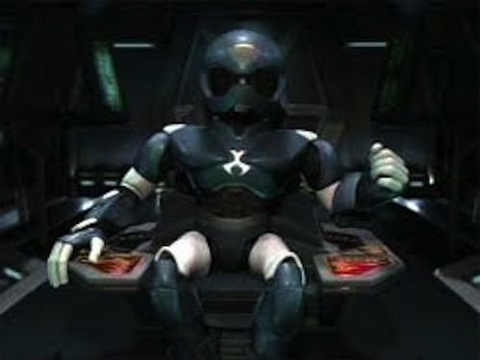
April 1, 2012: A date that will live in infamy.
While some of us were busy watching terrible pirate anime and Gene getting trolled by a janitor, the rest of the civilized world was watching the single greatest acting of trolling in all of modern television. Yes, for that one special night, Toonami, the most influential block of programming in western civilization, returned as a massive April Fool’s joke for Cartoon Network’s late night segment, Adult Swim. Truly, it was a sight to behold, and yet many of us missed it entirely. Fortunately, this is the wondrous age of DVR’s and the internet, which means the evening will live on in the hearts and hard drives of millions. While I won’t bore you with full reviews of all 12 shows, I will treat you to a super-condensed take on each episode that aired. With that, it’s time for the Lightning Round.
Bleach 247 – Predictable episode it what remains the only interesting Bleach filler arc.
DragonBall Z 177 – Everything that is good and bad about DragonBall Z.
Gundam Wing 10 – The first major turning point in the series, but is ultimately boring.
Tenchi Muyo! Ryo-Ohki 19 – Easily the worst episode of the worst OVA of an ok harem anime.
Outlaw Star 25 – The “finish line” of the series provides a mediocre buildup to the final confrontation.

Also, BWACK-HO-SAMA!!!
Big O 01 – Classy mecha is classy.
Yu Yu Hakusho 110 – The single best episode of the final arc.
Blue Sub #6 01 – Fish Waifu: Can’t tell if repulsed or aroused.
Trigun 23 – An episode that outshines almost all other episodes in an already memorable series.
Astro Boy 01 – “Watch out for cars!”
Gigantor 01 – He’s a space-age robot at your command. What more do you want?
Come back next time, as I venture into the great unknown.